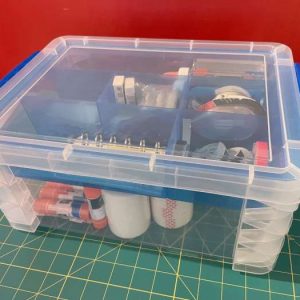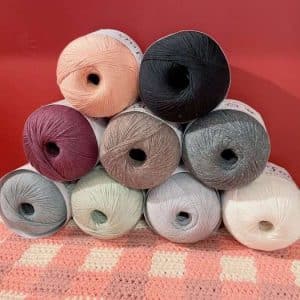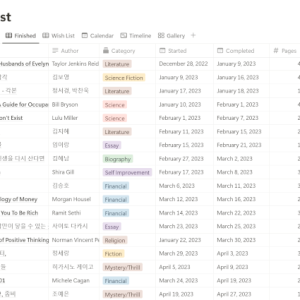How to Improve JLPT Listening: Effective Strategies for Success

Studying for the JLPT can be daunting, especially when it comes to the listening section. However, with the right approach and techniques, you can significantly improve your listening skills and boost your confidence for exam day. In this guide, we’ll explore effective strategies on how to improve JLPT listening skills, from dedicated practice with listening books to immersive experiences with Japanese media. I’ve also included very useful tools and resources that I’ve found helpful in improving my listening skills while making the process more enjoyable. By incorporating these strategies into your study routine, you’ll be better prepared to tackle the listening portion of the exam and achieve your desired results.
Practice Regularly
Consistent practice is vital for improving JLPT listening skills. Set aside dedicated time each day to engage with Japanese audio content. Regular practice helps you become familiar with Japanese speech patterns, making it easier to understand during the exam.
Even just 10 minutes a day is far more effective than cramming for an hour once a week, as daily exposure reinforces retention and builds familiarity over time. Shorter, frequent practice sessions keep your brain consistently engaged with the language, allowing for better recall and gradual improvement. In contrast, studying for a long period once a week can lead to information overload and less effective long-term retention.
For example, I aim to listen to audio recordings from JLPT books for at least 15 minutes every day. This routine builds confidence and reduces the anxiety often associated with the JLPT listening section. Even on busy days, squeezing in five minutes of listening practice keeps my skills sharp. I also incorporate JLPT vocabulary audio clips found online, which help reinforce key words and phrases frequently tested on the exam.
Background Listening with Variety
In addition to regular practice, I integrate Japanese audio into my daily life as much as possible. Whether I’m washing dishes, doing laundry, or simply relaxing after a long day, I let Japanese content play in the background. This includes news broadcasts, music, podcasts, and anime, which help reinforce natural speech patterns and expose me to a variety of accents and vocabulary.
For added engagement, I select content that aligns with my interests. I frequently watch YouTube videos about stationery and cooking, which not only entertain me but also introduce useful vocabulary. Some of my favorite resources include:
- JLPT N1 日本語ききはじめ Podcast – A great resource for advanced listening practice.
- Easy Japanese – Provides news articles in simple Japanese with audio to help learners improve comprehension.
- ANNnewsCH – A Japanese news channel that provides exposure to formal speech.
- Yuyu Nihongo Podcast – Casual Japanese conversations useful for everyday comprehension.
- The Bite-Size Japanese Podcast – Short episodes that make it easy to fit listening practice into a busy schedule.
- Atashin’chi – A fun anime that features natural dialogue and humor.
When I find a new word or phrase, I note it down and try to listen for it in other contexts. I also include JLPT vocabulary audio clips found online to reinforce words that commonly appear in the exam.
If finding time is a challenge, breaking up listening practice into smaller segments throughout the day can be effective. I listen while commuting, exercising, or preparing meals, which allows me to stay engaged with the language without needing a dedicated study session. Over time, this consistent exposure helps me understand conversations naturally without having to focus too intently. By making Japanese listening a regular part of my routine, I continuously improve without it feeling like extra work.
Listen and Shadow
Shadowing, typically used for speaking practice, can also enhance listening skills by requiring close attention to audio material. This method stands out as it improves both speaking and listening abilities simultaneously. You don’t need lengthy material; even short one-minute clips suffice. It is also less boring than passive listening.
Personally, I practice for just five minutes by repeating the audio multiple times. Integrate shadowing into your daily practice routine to maximize its benefits. To make shadowing more effective:
- Choose an audio clip slightly above your current level but still understandable.
- Listen to the clip once without reading a transcript.
- Play it again while repeating after the speaker, trying to mimic their pronunciation and intonation.
- Compare your pronunciation with the original to identify areas for improvement.
- Gradually work up to longer and more complex passages.
This technique helps train your ear to recognize natural speech patterns while reinforcing proper pronunciation. Over time, you’ll find yourself catching words and phrases more easily in the JLPT listening section.
Shadowing also enhances your ability to recognize speech patterns and sentence structures. By actively engaging with the audio, you develop a stronger sense of natural intonation and pacing, which can make understanding spoken Japanese easier in real-life situations. Over time, this method helps bridge the gap between passive listening and active comprehension.
Use Captions and Subtitles
When watching Japanese content on platforms like YouTube or Netflix, I always make sure to enable subtitles. This helps reinforce my understanding by associating spoken words with their written form. It also serves as a great way to pick up new vocabulary and idioms. Whether it’s a drama series, anime, or documentary, having subtitles on allows me to immerse myself more fully in the language and learn new words in context.
To take this method a step further, try using Japanese subtitles instead of English. While English subtitles can help you understand the overall meaning, Japanese subtitles push you to process information in Japanese without relying on translation. This can be a great stepping stone to fully understanding spoken Japanese.
For an extra challenge, try watching an episode of an anime or drama without subtitles after you’ve already watched it with subtitles. This helps reinforce your listening skills by forcing you to rely solely on your ears rather than reading along.
I find Language Reactor very helpful. It’s a browser extension that enhances subtitle learning. I always keep it on when I watch things online, as it provides dual subtitles and interactive features that make it easier to follow along and learn in real-time. This tool helps me understand the nuances of spoken Japanese by allowing me to see both the Japanese and English subtitles simultaneously. Additionally, it highlights words and phrases I’m unfamiliar with, making it easier to reinforce new vocabulary. By integrating Language Reactor into my routine, I can make passive watching more productive and enjoyable, turning casual entertainment into an effective language-learning experience.

Studying with a JLPT Listening Book
When preparing for the JLPT, using a dedicated listening book is essential. I recommend finding one with plenty of practice questions and transcripts. Here’s how I make the most of my JLPT listening book to boost my skills:
- Choose 5 practice questions and give them a go.
- Check your answers to see how well you did.
- Then, for each question:
- Listen once more, but this time with the transcripts.
- Mark down any words or sentences you missed.
- Challenge yourself by listening 3-5 times, gradually speeding up to 1.3 times the normal pace.
- Practice mimicking the audio with shadowing.
This method relies on two essential components to enhance listening comprehension:
Increasing Audio Speed
Listening to the audio at a faster pace challenges your brain to process information more quickly and accurately. Starting at the normal speed allows for comfortable comprehension, but as you increase the speed, your brain must work harder to keep up. This helps sharpen your listening skills and prepares you for the pace of conversations in the exam.
Many language learning apps, such as Audacity or VLC Player, allow you to adjust playback speed. Begin by listening at the standard speed and gradually increase it as you become more comfortable. If you can follow along at 1.2x or 1.3x speed, the normal pace of the JLPT exam will feel much easier.
Repetition for Retention
Repetition is essential for mastering JLPT listening skills. Listening to the same audio material multiple times trains your brain to process Japanese speech more efficiently. This repetition enhances your ability to catch nuances and details, making it easier to comprehend similar conversations during the exam. Incorporating regular repetition into your study routine is key to improving your listening proficiency effectively.
A useful strategy is to revisit old listening exercises you struggled with a few weeks prior. By doing so, you can measure your progress and reinforce learning. If you find yourself understanding much more than before, it’s a clear sign of improvement.
Take Advantage of JLPT Mock Tests
Taking full-length JLPT mock tests is crucial for building test-day endurance and familiarity with the exam format. Schedule regular mock tests leading up to the exam and simulate real test conditions by using a timer and eliminating distractions.
After completing a mock test, review incorrect answers thoroughly. Identify whether the mistakes were due to misheard words, unfamiliar vocabulary, or misunderstanding the question format. Analyzing mistakes will help refine your study approach and prevent similar errors on exam day.
Mastering JLPT listening skills is achievable with consistent practice and strategic techniques. Whether you’re challenging yourself with audio speed or immersing yourself in Japanese media, each method plays a crucial role in sharpening your listening abilities.
By embracing these strategies and incorporating them into your study routine, you’ll build the confidence and proficiency needed to excel in the JLPT listening section. Keep practicing, stay determined, and trust in your ability to succeed. Good luck on your JLPT journey!
Explore More in Creative Endeavors

JHIA Knitting Certification: Is It Right for You?

Brain Dump Technique: Benefits, Steps, and Examples

Benefits of Decluttering: How a Tidy Space Can Transform Your Life

Craft Supply Storage Ideas: From Clutter to Efficient Organization

How to Reduce Social Media Time and Regain Control of Your Life

My Granny Square Cardigan Journey: Stitch by Stitch

Finishing My Granny Square Cardigan: The Final Touches




